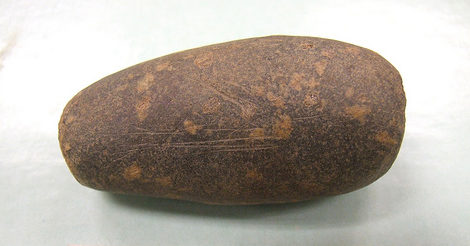
 )
)The history of humanity in the Americas is an ongoing point of curiosity. If we started out in Africa as is generally believed, spreading into Eurasia would have been fairly straightforward. Australia is basically the opposite situation, being so remote that arrival has to be by sea. But with the Americas, there is the tantalizing Bering land bridge and a proximity to Europe by sea that makes multiple “discoveries” at least theoretically possible well before Columbus. There are more than a few open questions, but evidence from various archaeological sites fairly consistently put us here no earlier than 15,000 to 20,000 years ago. So it is no small claim to say new evidence gives a date of 130,000 years for the first humans living on an American continent.
The big gap between this new date and the previous one is staggering enough to warrant a slew of headlines. It has also prompted a fair bit of skepticism, which is not entirely unwarranted given the extraordinary nature of the claim. The dating method is a fairly new variation on radiometric techniques, so the probability of the samples representing an unanticipated edge scenario for which the method is not as reliable is a little higher than it would be for a more established method. And what was actually found were manipulated mastodon bones and some artifacts identified as stone tools for working with bone. Actual human remains would obviously be more direct evidence, although such tools are often recognized as evidence of human activity. (You can find the original paper here if you want to evaluate for yourself.) The excitement and attention are certainly warranted. At the same time, this news is best understood as an overheard excerpt of an ongoing conversation, not a formal pronouncement of a final verdict.
I was actually more intrigued by the story of the work itself. The bones and artifacts were originally discovered and documented 25 years ago during a highway construction project. The find had unique qualities that stood out at the time, but attempts to date it with available carbon dating methods were inconclusive. And so the scientists had to wait a couple of decades until a usable dating technique became available. The publication of these results is thus a testament to their perseverance regardless of how the conclusions are ultimately judged.
And so we have a reminder of both the painstaking and careful side of science as well as the provocative and provisional aspect. Whenever oldest/earliest records are overturned, there is a tendency to question any and all prehistoric dates and dating methods. Archaeology will always find older things, because younger finds don’t make the older ones go away. There is an asymmetry to what we can positively prove and what we can negatively rule out. And individual conclusions are not reached haphazardly. Most scientists operate like this team, only publishing when they have overcome their own inner skepticism in order to be reasonably certain. That doesn’t mean they can’t ever be wrong or that we shouldn’t also approach surprising or even mundane findings with our own skepticism. It just means we can’t casually dismiss them out of hand simply because they are challenging.
Andy has worn many hats in his life. He knows this is a dreadfully clichéd notion, but since it is also literally true he uses it anyway. Among his current metaphorical hats: husband of one wife, father of two teenagers, reader of science fiction and science fact, enthusiast of contemporary symphonic music, and chief science officer. Previous metaphorical hats include: comp bio postdoc, molecular biology grad student, InterVarsity chapter president (that one came with a literal hat), music store clerk, house painter, and mosquito trapper. Among his more unique literal hats: British bobby, captain’s hats (of varying levels of authenticity) of several specific vessels, a deerstalker from 221B Baker St, and a railroad engineer’s cap. His monthly Science in Review is drawn from his weekly Science Corner posts — Wednesdays, 8am (Eastern) on the Emerging Scholars Network Blog. His book Faith across the Multiverse is available from Hendrickson.

Leave a Reply